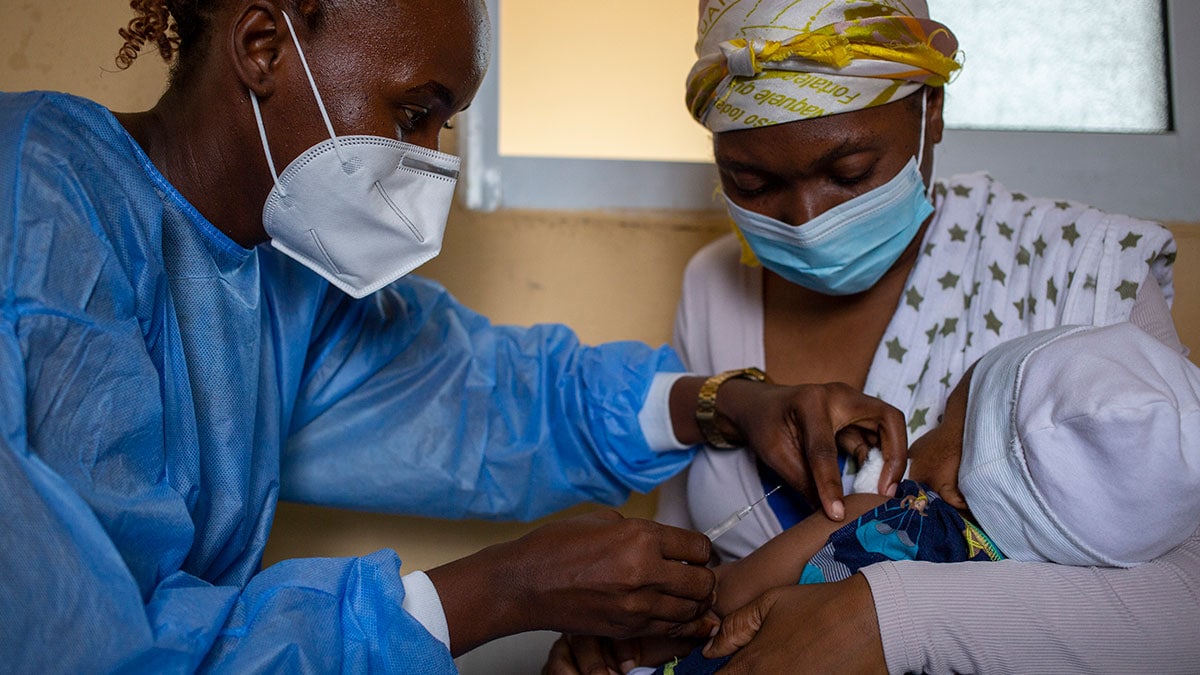At a glance
CDC works with countries and partners worldwide to protect people, especially children, from measles.

Measles elimination
Measles elimination in a country or region means that there are no locally transmitted measles infections or outbreaks lasting 12 months or longer.
Every region in the world wants to eliminate measles, but no region has achieved and sustained elimination. Measles elimination is possible by reaching every child with 2 doses of measles vaccine. CDC works with partners to implement the Measles & Rubella Strategic Framework, a global strategy to reach every child with 2 doses of vaccine.
Strengthening vaccination programs

Because measles is highly contagious, it can easily spread in unvaccinated or under-vaccinated communities. Measles cases anywhere in the world pose a risk to all countries and communities where vaccination coverageA is below 95%.
CDC works with countries and global partners to:
- strengthen national vaccination programs
- vaccinate more people against measles
- strengthen surveillance systems that detect measles early
- confirm cases through a global laboratory network
- respond quickly to stop outbreaks
Partnerships
CDC is a founding member of the Measles & Rubella Partnership (M&RP), a global initiative to lead and coordinate efforts to achieve a world without measles or rubella. The partnership is aligned with the Immunization Agenda 2030 initiative, which aims to save 50 million lives by providing access to lifesaving vaccines by the end of 2030.
- Vaccination coverage is the estimated percentage of people who have received specific vaccines.
